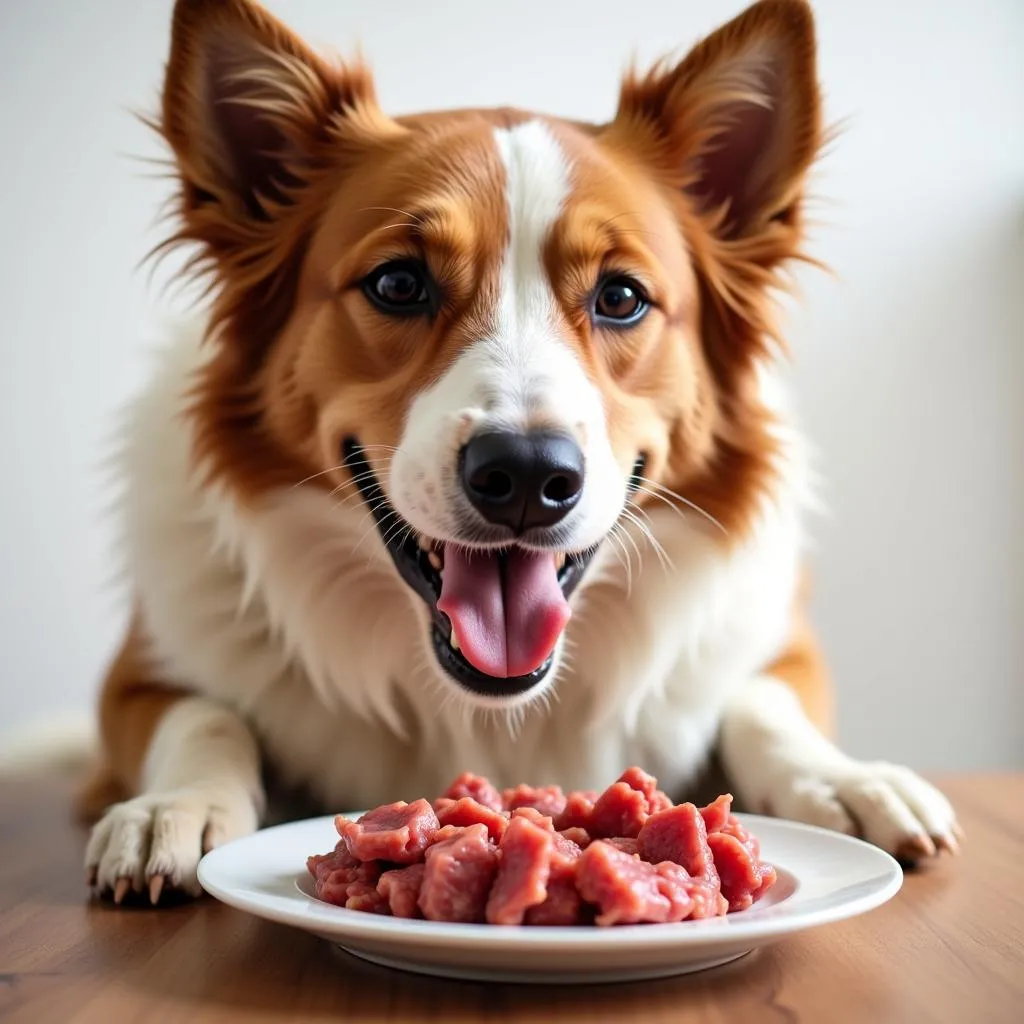Raw Meat Pet Food has become increasingly popular in recent years, with many pet owners opting for this diet for its perceived health benefits. But with so many different options available, it can be overwhelming to know where to start. This comprehensive guide will help you understand the basics of raw meat pet food, explore its pros and cons, and determine if it’s the right choice for your furry friend.
What is Raw Meat Pet Food?
Raw meat pet food, also known as a BARF (Biologically Appropriate Raw Food) diet, is a type of pet food that consists of raw, unprocessed animal ingredients, such as meat, bones, organs, and sometimes fruits and vegetables. This diet aims to mimic the natural feeding habits of wild animals, providing a complete and balanced nutritional profile for your pet.
Benefits of Feeding Your Pet Raw Meat
There are several purported benefits associated with feeding your pet a raw meat diet, including:
- Improved Digestion and Nutrient Absorption: Many proponents believe that raw food is easier to digest and provides better nutrient absorption compared to processed kibble.
- Enhanced Skin and Coat Health: The high-quality protein, fatty acids, and other nutrients in raw meat can contribute to a shiny and healthy coat.
- Stronger Teeth and Bones: Raw meat, especially bones, can help keep teeth clean and strong, and may also support bone health.
- Increased Energy Levels: Some pet owners report that their pets have more energy and vitality on a raw diet.
Disadvantages of Feeding Your Pet Raw Meat
While raw meat pet food offers potential benefits, it’s important to consider the drawbacks as well:
- Food Safety Concerns: Raw meat can harbor harmful bacteria, such as Salmonella and E. coli, which can pose a risk to your pet and even your family.
- Nutritional Deficiencies: A poorly formulated raw diet can lead to nutritional imbalances and deficiencies.
- Storage and Handling Challenges: Raw meat requires careful storage and handling to prevent spoilage and contamination.
- Cost: Raw food can be more expensive than commercial kibble.
Choosing the Right Raw Meat Pet Food
If you’re considering switching your pet to a raw meat diet, there are several important factors to consider:
- Quality of Ingredients: Look for brands that use human-grade, fresh meat as the primary ingredient, and avoid those that contain fillers, artificial flavors, or preservatives.
- Complete and Balanced Nutrition: Ensure that the food meets your pet’s specific nutritional requirements, as different brands may have different formulations.
- Safety and Handling: Choose brands that prioritize safety and follow strict processing and handling procedures.
- Your Pet’s Needs and Preferences: Consider your pet’s age, activity level, and any health conditions they may have.
“The Raw Meat Diet is Not a One-Size-Fits-All Approach.” – Dr. Emily Jones, Veterinarian
Frequently Asked Questions
Q: Is raw meat pet food safe for all pets?
A: While raw meat can be beneficial for many pets, it’s important to consult with your veterinarian to ensure it’s suitable for your specific animal. Some pets, such as those with compromised immune systems or certain health conditions, may not be suitable for raw feeding.
Q: How do I transition my pet to a raw meat diet?
A: It’s crucial to transition your pet to a raw diet gradually to avoid digestive upset. Start by mixing a small amount of raw food with their current kibble and gradually increase the proportion of raw food over a few days or weeks.
Q: How do I store and handle raw meat pet food properly?
A: Raw meat should be stored in the refrigerator at 40°F or below and thawed in the refrigerator. Always wash your hands and surfaces thoroughly after handling raw meat.
Q: What about bones in raw food?
A: Bones are a natural part of a raw meat diet, but it’s important to choose the appropriate size and type of bone for your pet. Smaller pets may need softer bones, while larger breeds may tolerate chewier bones.
“Always consult with your veterinarian before making any dietary changes for your pet.” – Dr. Mark Thompson, Veterinarian
Conclusion
Raw meat pet food can offer potential benefits for your pet, but it’s essential to be aware of the potential risks and challenges associated with this diet. If you’re considering switching your pet to raw food, research reputable brands, consult with your veterinarian, and prioritize food safety and handling practices. Remember, the best diet for your pet is one that meets their individual needs and is safe and healthy for them.
 Raw Meat Pet Food Benefits: A healthy and happy pet
Raw Meat Pet Food Benefits: A healthy and happy pet
For further information and expert advice on raw meat pet food, contact our team of professionals at:
Phone: 02437655121
Email: minacones@gmail.com
Address: 3PGH+8R9, ĐT70A, thôn Trung, Bắc Từ Liêm, Hà Nội, Việt Nam
We’re available 24/7 to answer your questions and provide personalized support.